John Hurrell – 25 July, 2013
Their dragged but tidy lines of paint, with their internal streaks, ragged stop/start smudges, and wobbly linear rhythms provide an odd foil that counters the expected impeccable finish of most schematic art like this. Such linear imperfections are just as important to the attentive viewer as the possible sequences of drawn shape elements or grid lines.
It’s an interesting notion to regard a painting on a wall as a sentient being, a living creature with powers of cognition. It seems to be a trend now to ascribe personality traits to inanimate art objects. I notice across the Tasman, Andre Hemer is calling his current exhibition New Smart Objects, implying his exhibited endeavours are smart - ie. mentally active: intelligent - and perhaps not himself. Not their creator.
So back to Simon Ingram and this show in Kitchener St., who is interviewing whom? What’s generating the paint application process here? Which chicken? What egg? Do artists come from paintings and not the other way around? Could that be possible? Is that the point?
Ingram’s five paintings - their marks made by his Lego held/robot-controlled paintbrushes - are diagrammatic with marks usually drawn in short bursts, in acrylic not oil, and sometimes without repeated dipping into a paint pot. They seem based on simple exercises enclosing surface areas with rudimentary (but often discreetly incompleted) geometric shapes. Sometimes these forms overlap (such as diminishing circles tucked in a corner), sometimes they don’t (as with juxtaposed diminishing sized squares). Sometimes a regular grid composition focuses on maximum density: other times only two differently sized circles divide up the canvas - but into six.
As a group the marks made on these paintings look as if they are based on verbally articulated instructions in print, like those that form the basis of Sol Lewitt’s wall drawings. Not say a mathematical formula - though they could be that too. Not preplanned, but perhaps made instead using the robot as a paint application tool operated by Ingram live step by step, with no independent robotic ‘thinking’ or ‘mark awareness’ involved.
Though I prefer the earlier more ‘expressive’ images made by Ingram and his cybernetic system (because of the humour of a machine ‘expressing’ interiority), these more subtle ‘minimalist’ works do have an appeal. They are diagrammatic, possibly symbolic and maybe even realistic (as drawings copying art).
Their dragged but tidy lines of paint, with their internal streaks, ragged stop/start smudges, and wonky linear rhythms provide an odd foil that counters the expected impeccable finish of most schematic art like this. Such linear imperfections are just as important to the attentive viewer as the possible sequences of drawn shape elements or grid lines. Those sequences, the way the eye attempts to determine which marks came first and which were last, provide a restrained satisfaction as record: a precise trajectory of artist’s thought - and wobbly robotic ‘hand’.
John Hurrell
Recent Comments
John Hurrell
Well Simon always has insisted on the right to control such decisions, esp what ends up (out of a group ...
Owen Pratt
If one has to outsource your art making this is the way to do it; neo marxist keeping control of ...
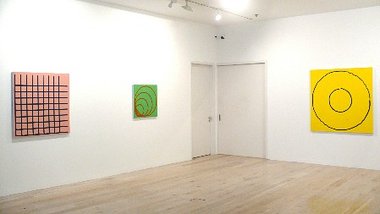
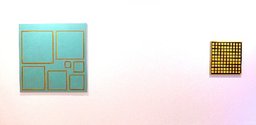
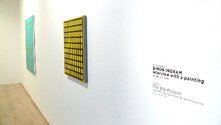
 Advertising in this column
Advertising in this column Two Rooms presents a program of residencies and projects
Two Rooms presents a program of residencies and projects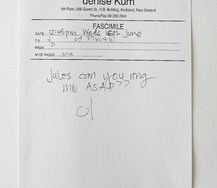
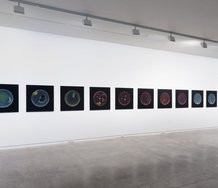
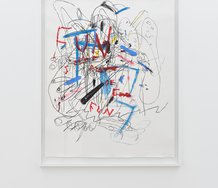

This Discussion has 2 comments.
Comment
Owen Pratt, 4:34 p.m. 25 July, 2013 #
If one has to outsource your art making this is the way to do it; neo marxist keeping control of the means of production.
But who chooses the colours?
John Hurrell, 5:14 p.m. 25 July, 2013 #
Well Simon always has insisted on the right to control such decisions, esp what ends up (out of a group of experiments, such as with radio energy) in the gallery.
Here is his statement for this show:
In Interview with a Painting Simon Ingram reverses some the machinic codes of his recent work for a more direct dialogue with each painting. Rather than look upwards and outwards to radio energy and space, the paintings in this exhibition are interested in a dialogue with the artist, the studio, colour and the culture of painting.
(Artist's statement, June 2013).
I would have thought all his paintings show an interest 'in a dialogue with the artist, the studio, colour and the culture of painting.' How could he ever be otherwise?
Participate
Register to Participate.
Sign in
Sign in to an existing account.